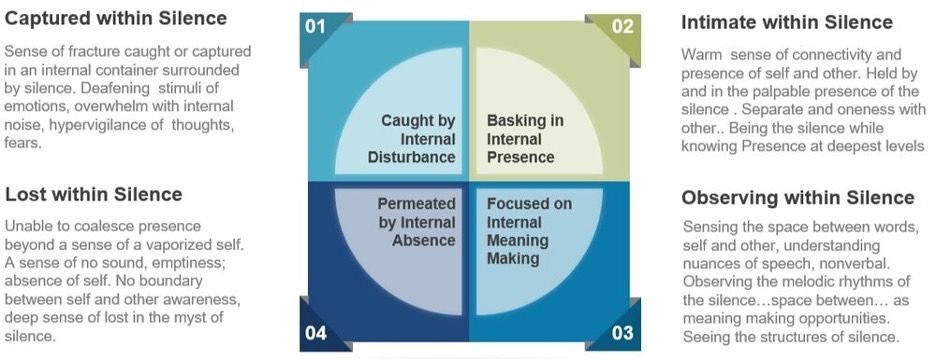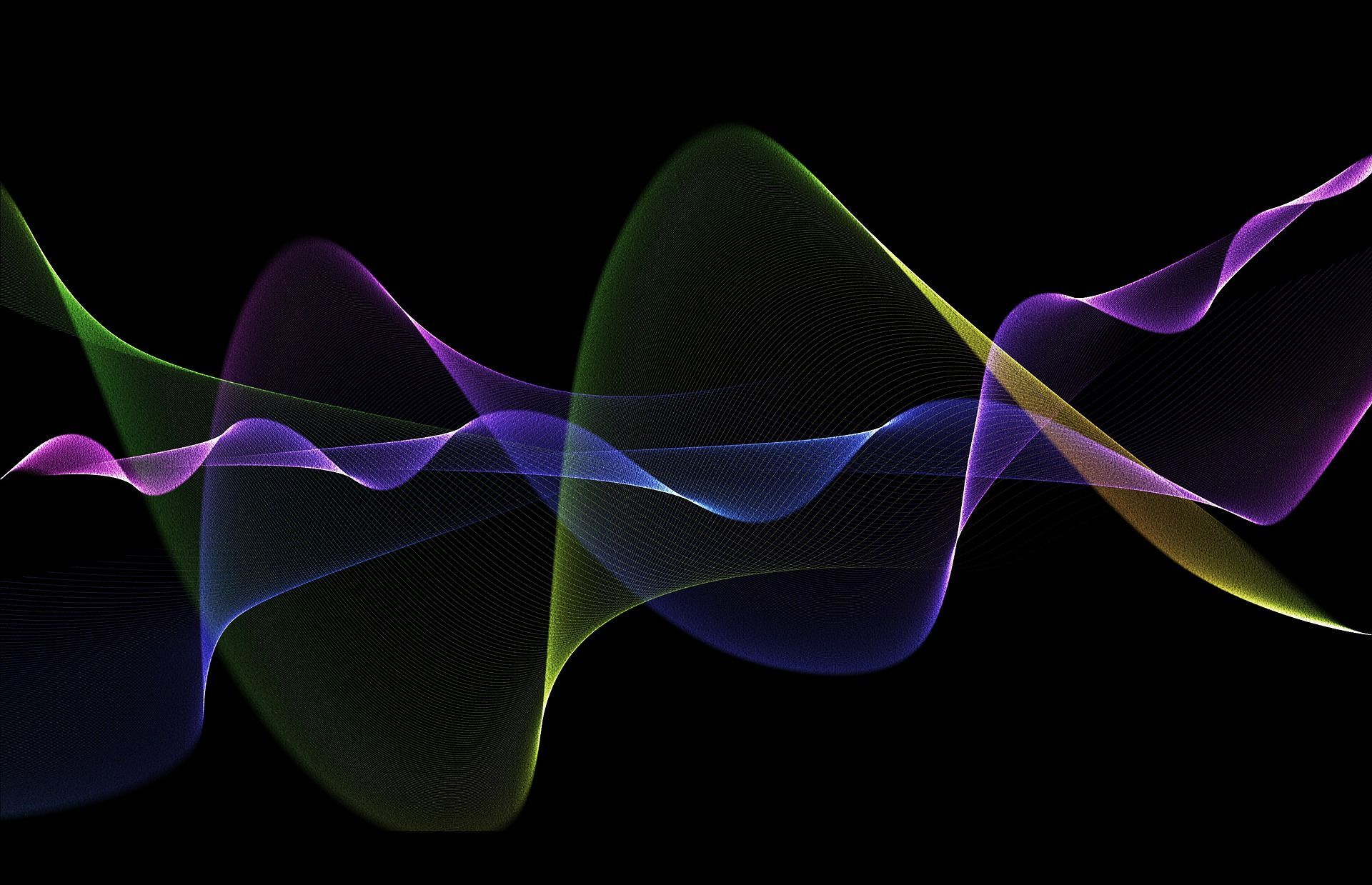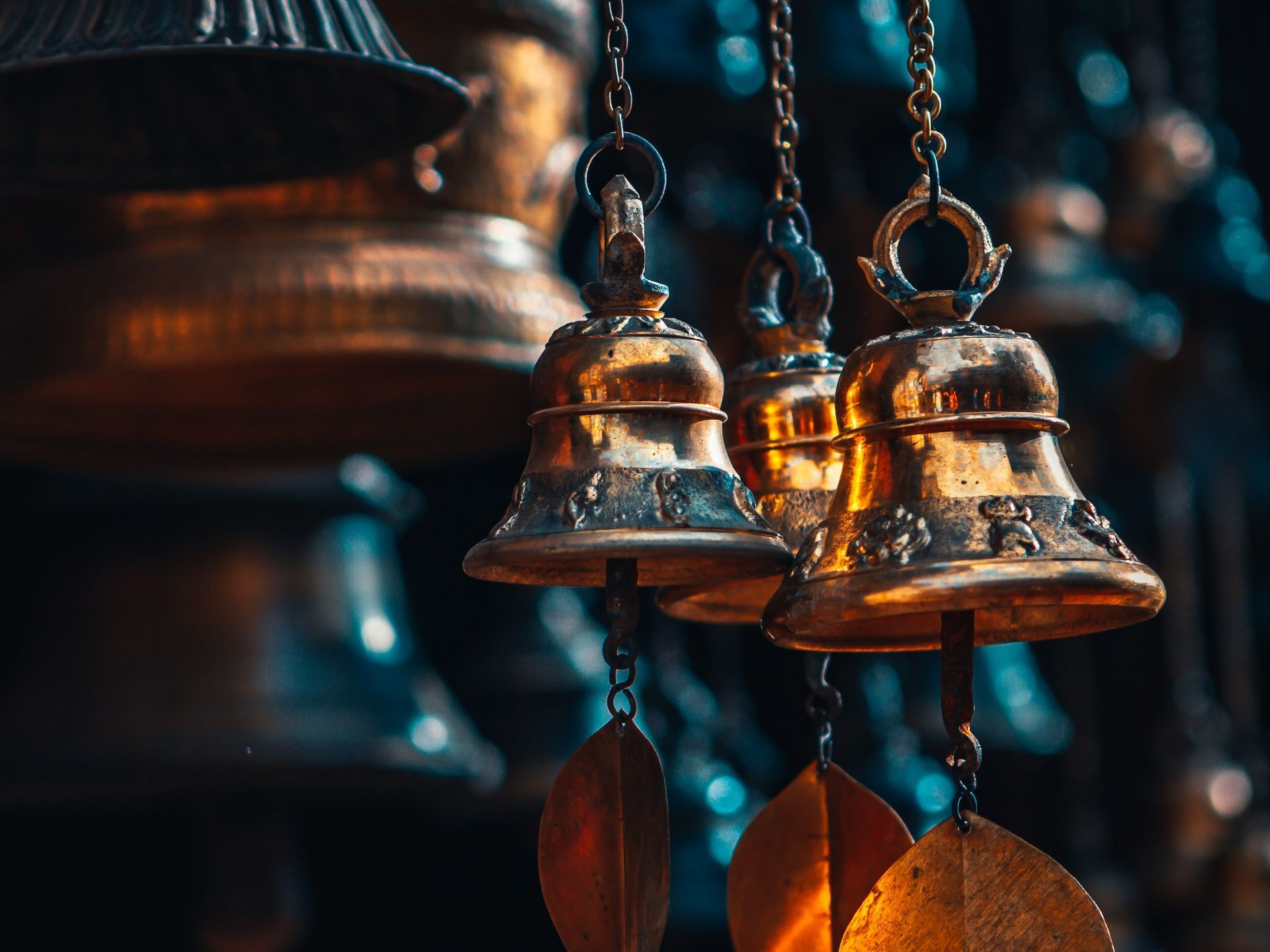Silence
Share this Article
We chat often about prayers, meditation, walks in the woods to support developing a natural state of Stillness.
Most spiritual traditions suggest in the silence we find ourselves. For example, Eckhart Tolle says “The equivalent of external noise is the inner noise of thinking. The equivalent of external silence is inner stillness.”
Tied to inner stillness, the HeartMath Institute uses heart-centered meditation and breathwork to create this stillness. We call this inner stillness your healing presence…totally present to the moment….the point of all power for all creation. As we explore it further we find that the stillness is the voice of the soul. Caroline Myss adds “The soul always knows what to do to heal itself. The challenge is to silence the mind.”
My recent exploration of silence was to look at how we experience silence as a way to create awareness of the different types and uses of silence as a condition (or not) for healingpresence to evolve and emerge.
To understand how we use silence, we need a clear sense of the unspoken and general types. There are three types that are easily identified:
- Obstructive Silence
- Connected Silence
- Intimate Silence
Obstructive Silence (of the Mind)
Silence is not always beneficial and can be used to obscure as well as to reveal, i.e. the silent treatment of a family.
If verbal dialogue is our primary means of connecting (making contact), silence can be a means of avoidance or reducing connection with another. For example, a response of silence from another can be the trigger for shame, engendering a rapid withdrawal from connecting or making contact. Silence is interpreted in these situations as an active refusal to speak, a rupture in the relational field, and an obstacle to interpersonal contact. A more subtle form of obstructive silence is the social taboo; subjects never spoken of or avoided.
Connected Silence
An enriching silence is the sharing of presence, uninterrupted by words. It is the silence of being present to oneself, by oneself, and of the deepening awareness and exploration of our own being through solitary silence. We often find this in meditation, walking in nature and on occasion with animals or people.

Intimate Silence
When deep silence takes place between intimates (bound by either love or hate) there is no need to exchange information. They stand together in an abiding silence, which is sometimes interrupted by words. This form of silence communicates more than the words do. From a healing den perspective, it is the energetic exchange driven by emotions and the mind.
Quieting of the Mind to Become Present
The silence of avoidance is often about not acknowledging what is present, while connected silence is the silence of presence; of being fully in the here and now. In The Healing Relationship, Richard Hycner and Lynne Jacobs (1995), stress that Presence is more than a ‘quality,’ it is an existential stance: bringing all of myself to bear in this moment with this person. Therefore, genuine connectedness is a “turning towards” the other, with one’s whole being, and a turning away from personal concerns that are separate from this occasion and this person…a quieting of the mind and opening of the heart.
Being present in silence, however, requires an awareness of being embodied, and a connection to the solid actuality of the physical selves as well as a genuine responding to the other. It thereby seems as if genuine responding to the other is dependent on our connection to ourselves, our self-support as the silence.
Silence becomes the focus that allows us to become attuned to that which lies beyond our own chattering thoughts.
The turn towards the silence is also to become empty, open to new perceptions. It is to turn away from our fixed understandings and reified self-image and enter a transition state full of dynamic possibility. Such is known as a liminal state - a state devoid of preconceptions; of surrender, with total presence, on the threshold of something new.
Silence takes courage and involves a willingness to let go of our pre-configured interactions and to enter a liminal state where a new state of connectedness can emerge.
Stillness is where we become conscious of the interconnectedness of our being, of the subtle pre-awareness of our lived body and of the undiscovered potential of our being radically alien to our own conscious self.
Connected silence is to be present to the ‘nothingness’ or ‘void’ forming all perception, which contains all that is in pre-awareness, the unthought known, and the unrealized potential of our existence.
Silence as Presence
As I explored silence, I realized that the experience of silence is directly tied to our capacity to stay present. Ina certain way, silence is a container for conscious presence or conscious absence (we lose ourselves). In this sense, silence is the space between that either supports our presence or sustains our absence.
If we have found strength and curiosity in silence, it becomes comforting and supportive of our presence. If we have found fear induced by the mind, silence becomes aberrant and painful.
In the diagram below, there are four quadrants that suggest an experience of silence. For example, we can be intimate, captured, lost, or observing within silence.

An enriching silence is the sharing of presence, uninterrupted by words. It is the silence of being present to oneself, by oneself, and of the deepening awareness and exploration of our own being through solitary silence. We often find this in meditation, walking in nature, and on occasion with animals or people.
Your Thoughts
As you review the words above, write your thoughts and send them to me in comments, questions, or disagreement. These are my initial thoughts to deepen our understanding of the experience of stillness and silence.









